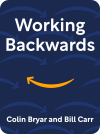The Fifth Discipline
The Art & Practice of The Learning Organization
"The Fifth Discipline" addresses a fundamental problem in modern organizations: companies inadvertently stifle their people's natural drive to learn through rigid structures and narrow job roles. Senge presents five interrelated disciplines that, when practiced together, transform organizations into environments where curiosity and collective intelligence flourish.
At the center of this framework is systems thinking - the discipline that integrates all others by teaching leaders to see patterns and feedback loops rather than isolated events. Through examples like the "beer game" supply-chain simulation and real corporate turnarounds, Senge demonstrates how small shifts in one area create ripple effects across entire organizations. This systemic perspective becomes essential for understanding how well-intentioned actions can sometimes worsen the problems they aim to solve.
The other four disciplines work together to build organizational learning capability. Personal mastery involves individual commitment to lifelong learning and vision clarification. Mental models examines the deeply held beliefs that shape perception, offering techniques to surface and test assumptions. Shared vision moves beyond corporate mandates to build genuine commitment by connecting organizational purpose with individual values. Team learning develops collective intelligence through dialogue where people suspend assumptions and think together.
Senge redefines leadership from command-and-control to creating learning infrastructure. Leaders become designers, teachers, and stewards who create the conditions where these disciplines can take root and flourish. The 2006 revised edition includes contemporary cases and reflects advances in organizational practice, making the concepts accessible for modern workplace challenges.
By reading "The Fifth Discipline", you will:
- Cultivate a systems perspective to identify leverage points and avoid unintended consequences: Understand how to analyze complex organizational challenges by examining feedback loops, delays, and circular causality rather than linear cause-and-effect thinking, enabling you to find high-impact intervention points while preventing well-intentioned solutions from creating worse problems.
- Strengthen personal mastery by articulating and pursuing your deepest values and aspirations in daily work: Develop practices for continuous learning and growth that connect personal vision with professional contribution, creating the foundation for both individual fulfillment and organizational learning capability.
- Learn to uncover and challenge mental models that limit innovation and impede adaptation: Develop skills to surface and examine the deeply held assumptions that filter how you interpret information and make decisions, enabling more effective problem-solving and collaboration in complex environments.
- Foster genuine commitment by co-creating shared visions that energize teams beyond mere compliance: Move beyond imposed corporate visions to build authentic shared purpose by connecting organizational goals with individual values, creating the energy needed for sustained learning and change.
Books to Follow
- The Fifth Discipline Fieldbook by Peter Senge et al.: Provides practical exercises and tools to apply the five disciplines in real-world settings. This companion volume transforms the concepts from the original book into actionable practices, offering step-by-step guidance for facilitating dialogue sessions, conducting systems mapping exercises, and building personal mastery practices within teams and organizations.
- The Dance of Change by Peter Senge et al.: Takes a deep dive into overcoming the barriers that emerge when implementing learning-organization practices. Senge and his colleagues identify the common challenges that arise as organizations attempt transformation - from growth limitations to diffusion of leadership - and provide strategies for navigating these predictable obstacles while sustaining momentum for change.
- Thinking in Systems by Donella H. Meadows: Offers an accessible introduction to system archetypes, feedback loops, and leverage points that deepens understanding of systems thinking principles introduced by Senge. Meadows provides tools for identifying where small changes can produce significant improvements and understanding how systems resist or enable change, complementing the organizational focus of Senge's work with broader systems wisdom.
- Presence by Peter Senge et al.: Explores how individuals and organizations can tap into shared intentions to bring about profound change. This work extends the learning organization concepts into deeper questions about collective awareness and the conditions that enable breakthrough innovations and social transformation, bridging individual development with systemic change.
- Team of Teams by General Stanley McChrystal: Illustrates team learning at scale and adapting to complex, rapidly changing environments. McChrystal's military experience provides concrete examples of how traditional hierarchical organizations can transform into networks of empowered teams that share information and coordinate action, demonstrating the five disciplines in high-stakes, dynamic contexts.
Systems Thinking as Integration
The fifth discipline integrates all other learning practices by helping people see how individual actions create larger patterns over time. Rather than focusing on events or even patterns, systems thinking examines the structures that drive behavior. This perspective reveals how well-intentioned efforts can sometimes worsen the problems they aim to solve, especially when cause and effect are separated by time or organizational distance.
Mental Models Shape Everything
Deeply held assumptions and beliefs filter how we interpret information and choose actions. The challenge isn’t having mental models - it’s being unaware of them. Most managers are trained to advocate for their positions rather than examine their assumptions, yet senior roles increasingly require dealing with complex problems that have no single right answer. Building awareness of mental models enables more effective problem-solving and collaboration.
Personal Mastery Creates Foundation
Individual commitment to continuous learning and growth provides the foundation for organizational learning. Personal mastery involves clarifying personal vision, developing creative tension between vision and current reality, and maintaining commitment to truth. Organizations cannot mandate personal mastery, but they can create conditions that support it by modeling learning behavior and providing growth opportunities.
Dialogue Enables Collective Intelligence
Team learning happens through dialogue where people suspend assumptions and think together, accessing collective intelligence that exceeds individual capabilities. This differs from discussion, where people advocate for predetermined positions. Effective dialogue requires skills in inquiry, deep listening, and examining one’s own thinking process while it’s happening.
Shared Vision Must Be Genuine
Real shared vision connects organizational purpose with individual values and aspirations rather than being imposed from above. People can be compliant (following reluctantly), enrolled (genuinely supportive), or committed (taking ownership). Only committed engagement creates the energy needed for sustained organizational learning and change.
Learning Requires Psychological Safety
People don’t learn when they feel threatened or defensive. Creating learning organizations means building communities where people feel safe to experiment, make mistakes, and challenge existing approaches. This requires leaders who model vulnerability, curiosity, and commitment to growth rather than projecting an image of having all the answers.
Delays Obscure Cause and Effect
Most significant organizational problems involve delays between actions and consequences, making it difficult to learn from experience. Understanding and accounting for these delays prevents common mistakes like abandoning effective strategies too quickly or implementing solutions that create worse long-term problems while providing short-term relief.
Q: How do the five disciplines work together in practice?
A: Systems thinking serves as the foundation that shows how the other four disciplines interconnect. Personal mastery provides individual commitment to learning, mental models help people examine assumptions, shared vision creates common purpose, and team learning develops collective capabilities. Without systems thinking, these remain separate tools rather than an integrated approach to organizational development.
Q: What makes this different from typical organizational development approaches?
A: Most organizational change efforts focus on events or behaviors rather than examining the underlying structures that drive patterns over time. The five disciplines approach looks at how individual actions create system-wide effects, often with significant delays between cause and consequence. This systemic perspective helps avoid solutions that treat symptoms while leaving root causes unchanged.
Q: How do you implement these concepts in a traditional hierarchical organization?
A: Start by modeling the disciplines yourself rather than trying to mandate them for others. Focus on creating small experiments where teams can practice dialogue, examine mental models, and work with shared purpose. Build learning infrastructure gradually, supporting people who show interest rather than requiring universal participation from the beginning.
Q: What’s the relationship between personal mastery and organizational learning?
A: Organizations learn only through individuals who learn, but individual learning doesn’t guarantee organizational learning. Personal mastery provides the foundation - people committed to their own growth and truth-telling create conditions where organizational learning becomes possible. However, organizational structures and culture must also support and reward learning behaviors.
Q: How do you know if your organization is becoming a learning organization?
A: Look for shifts from reactive to proactive behavior, increased ability to discuss difficult topics without defensiveness, and teams that regularly examine their own assumptions and mental models. People take ownership of problems rather than blaming others, and there’s genuine dialogue about vision and values rather than just compliance with corporate messaging.
Q: Why is systems thinking considered the most important discipline?
A: Systems thinking provides the framework for understanding how all organizational elements interact over time. Without it, efforts to build personal mastery, examine mental models, create shared vision, or improve team learning remain fragmented. Systems thinking reveals how these disciplines reinforce each other and how changes in one area affect the whole organization.
Q: How does this apply to software development and product management?
A: Software development involves complex systems where individual decisions create emergent behaviors over time. Teams that practice these disciplines become better at seeing how technical decisions affect user experience, how communication patterns influence code quality, and how shared vision enables coordination without micromanagement. Product managers particularly benefit from systems thinking when understanding how user needs, technical constraints, and business goals interact.
Q: What are the biggest obstacles to building learning organizations?
A: The primary obstacles are defensive routines that prevent examination of assumptions, time pressure that keeps teams in reactive mode, and reward systems that favor individual achievement over collective learning. Many organizations also underestimate the time and patience required - building learning capability is a long-term process that requires sustained commitment rather than quick implementation.
- Launching a major change initiative: When your organization struggles with siloed departments and you need a blueprint for fostering cross-functional collaboration. The five disciplines provide frameworks for building shared understanding and collective learning capability rather than relying solely on individual expertise or top-down control during transformation.
- After a failed strategy rollout: If previous efforts to innovate or transform have faltered, use Senge’s disciplines to diagnose underlying systemic issues. The book helps identify why well-intentioned strategies fail by examining mental models, feedback loops, and delays that weren’t considered in the original planning.
- Building a continuous-learning culture: When employee engagement is low and you want to reignite curiosity, purpose, and creative tension. The book provides tools for creating environments where teams can learn and perform beyond what any individual could achieve alone, moving from reactive firefighting to proactive learning and innovation.
- Developing leadership capabilities: For managers seeking to move beyond directive control toward enabling environments where teams self-organize and learn. The book redefines leadership from command-and-control to creating learning infrastructure where the five disciplines can take root and flourish.

Your support helps me maintain and improve the book recommendations for everyone.



